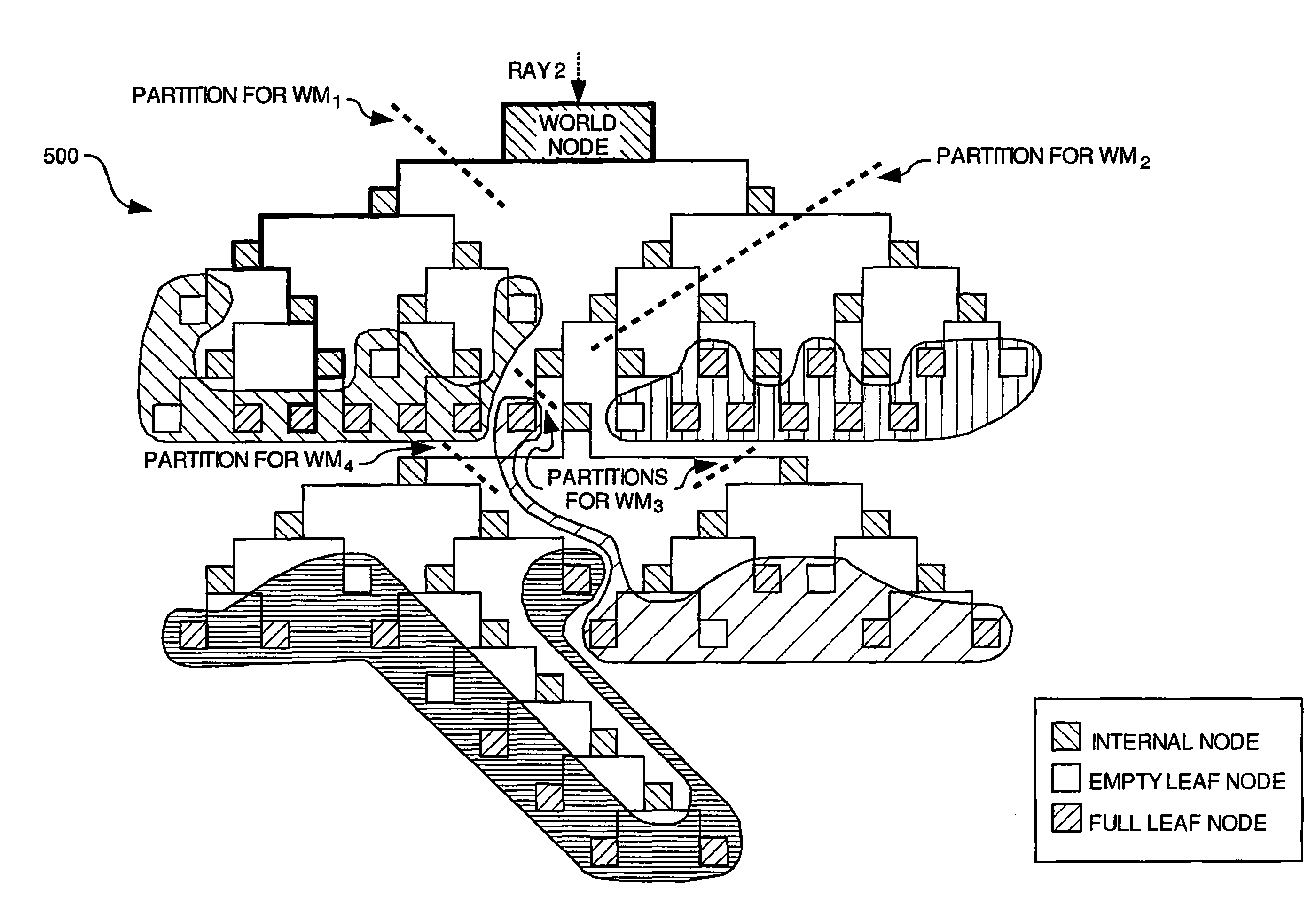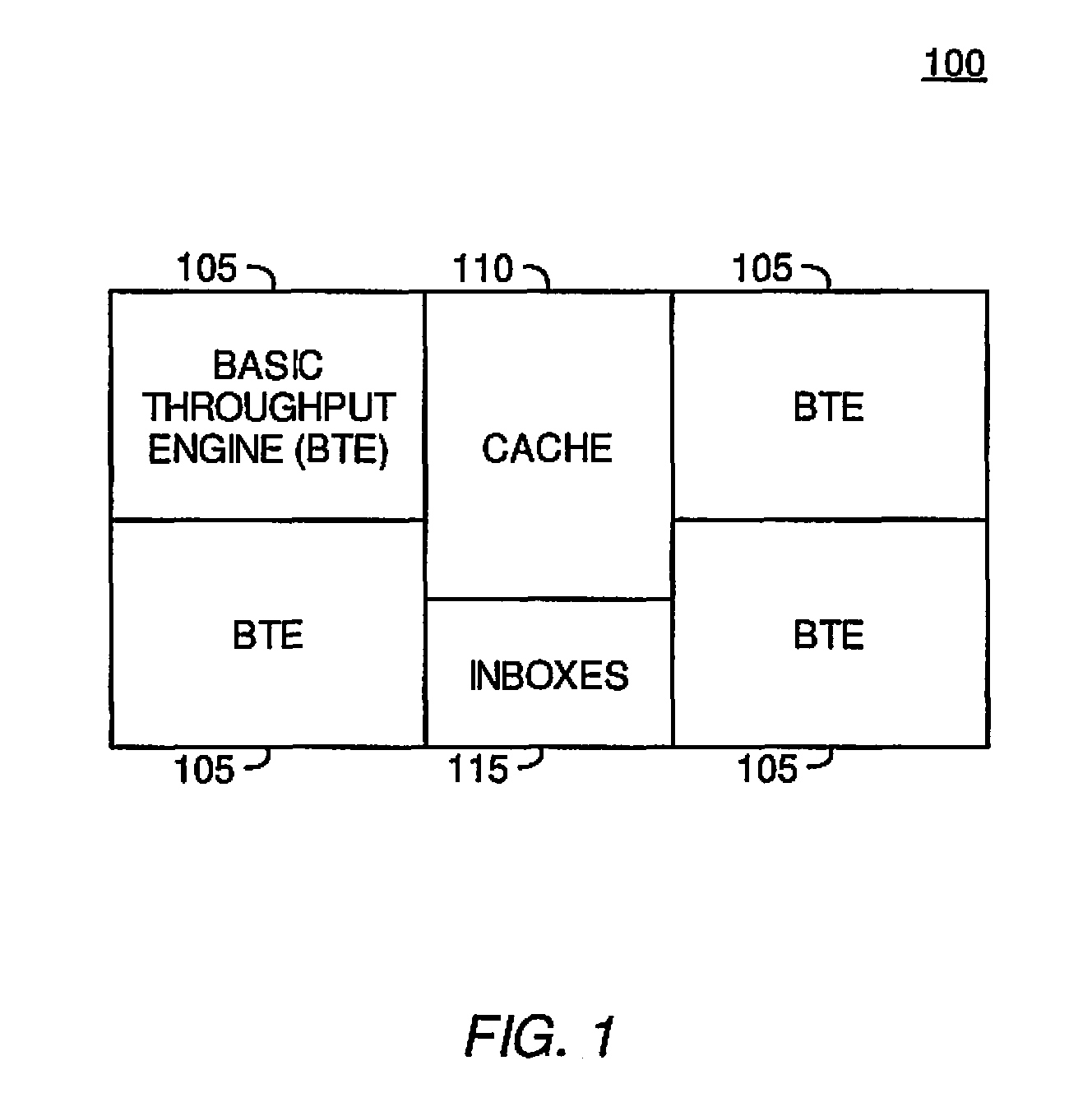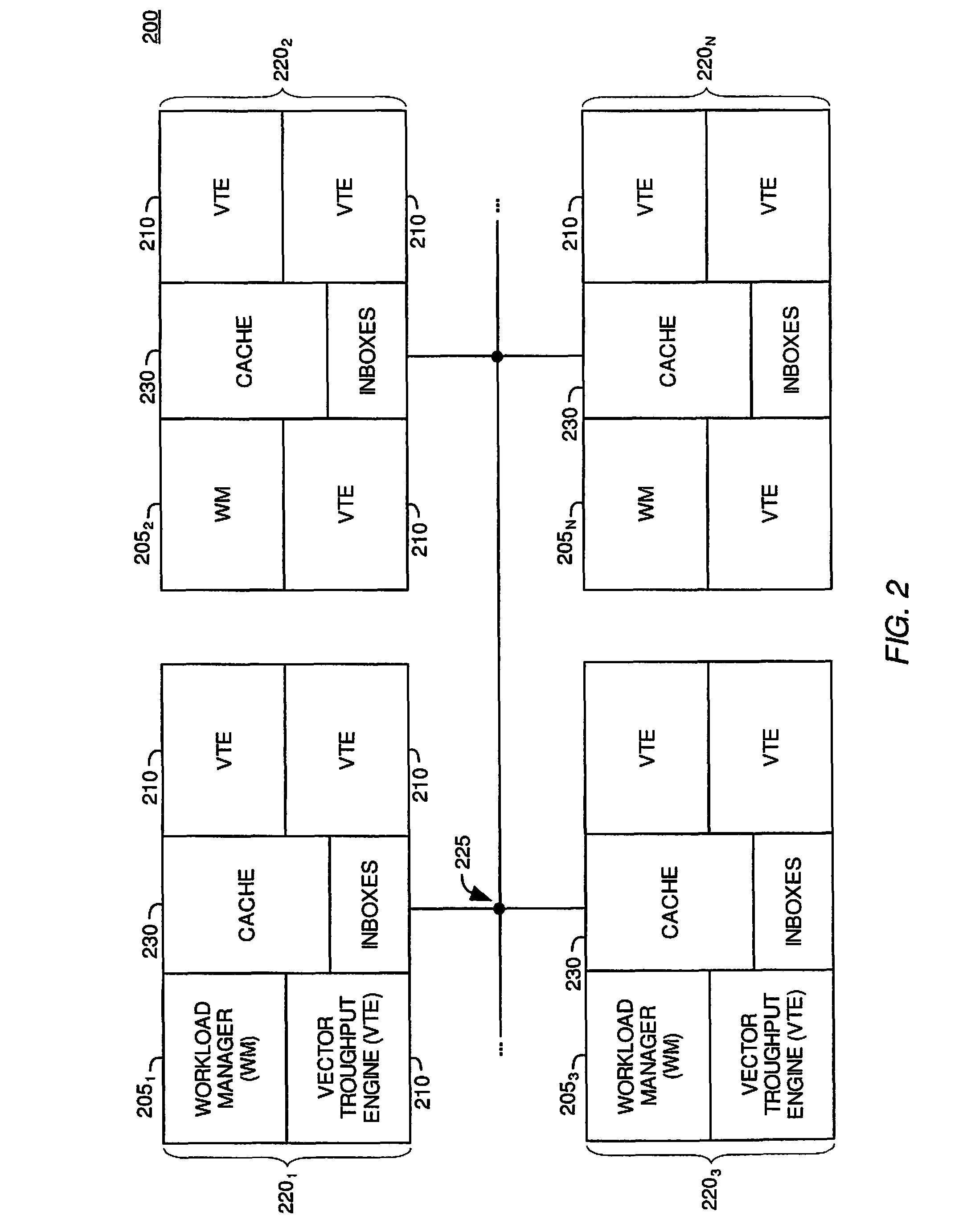Updating frame divisions based on ray tracing image processing system performance
a ray tracing and image processing technology, applied in the field of computer processing, can solve the problems of rasterization suffering from some drawbacks, using relatively low amounts of computational power, and modern monitors display images
- Summary
- Abstract
- Description
- Claims
- Application Information
AI Technical Summary
Benefits of technology
Problems solved by technology
Method used
Image
Examples
Embodiment Construction
[0027]Embodiments of the invention provide systems and methods for distributing workload in a ray tracing image processing system. Evenly distributed workload in a ray tracing image processing system may result in faster and more efficient image processing.
[0028]Some embodiments of the invention may evenly distribute workload by dividing a frame of pixels to be rendered into a plurality of regions, and assigning responsibility for each region to different processing elements. Each processing element may be responsible for performing a multitude of tasks for the pixels within their corresponding region, and these tasks may ultimately result in determining the color of those pixels. Furthermore, processing elements may be assigned responsibility to the regions of the frame based on the portions of a spatial index which they are responsible for traversing rays through.
[0029]Some embodiments of the invention may re-distribute workload amongst processing elements by re-dividing the frame...
PUM
 Login to View More
Login to View More Abstract
Description
Claims
Application Information
 Login to View More
Login to View More - R&D
- Intellectual Property
- Life Sciences
- Materials
- Tech Scout
- Unparalleled Data Quality
- Higher Quality Content
- 60% Fewer Hallucinations
Browse by: Latest US Patents, China's latest patents, Technical Efficacy Thesaurus, Application Domain, Technology Topic, Popular Technical Reports.
© 2025 PatSnap. All rights reserved.Legal|Privacy policy|Modern Slavery Act Transparency Statement|Sitemap|About US| Contact US: help@patsnap.com



